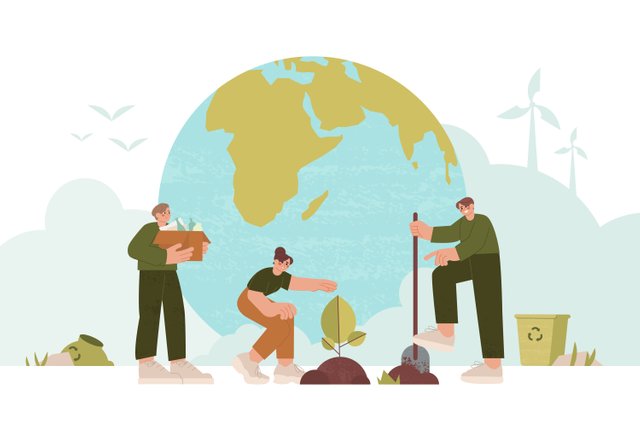Art for Earth: Uniting Creativity and Sustainability through Environmental NFTs

Art has always been a powerful medium for expressing emotions, ideas, and societal issues. In today's world, where environmental concerns are becoming increasingly urgent, artists are leveraging their creativity to raise awareness and promote sustainable practices. One of the emerging trends in the art world is the use of non-fungible tokens (NFTs) to create and trade digital artwork. This article explores the intersection of art, sustainability, and NFTs, highlighting how environmental NFTs can play a pivotal role in uniting creativity and sustainability.
Understanding Non-Fungible Tokens (NFTs)
Non-Fungible Tokens (NFTs) are unique digital assets that are stored on blockchain technology. Unlike cryptocurrencies such as Bitcoin or Ethereum, which are fungible and can be exchanged on a one-to-one basis, NFTs represent ownership of a specific item or piece of content. This uniqueness makes them particularly well-suited for the art world, where the authenticity and provenance of artwork hold great value.
The Environmental Impact of Traditional Art
Traditional art forms often rely on materials that have a significant impact on the environment. For instance, oil paints contain toxic chemicals, and the production of canvases contributes to deforestation. Additionally, shipping artworks worldwide consumes fossil fuels and releases carbon emissions. By embracing digital art through NFTs, artists can significantly reduce their ecological footprint and contribute to a more sustainable art industry.
Promoting Environmental Awareness through Art
Environmental NFTs provide artists with a powerful platform to raise awareness about environmental issues. Artists can depict the beauty of nature, highlight the impact of climate change, or shed light on the importance of conservation. By creating visually captivating and thought-provoking artwork, artists can engage viewers emotionally and inspire them to take action towards a more sustainable future.
Funding Conservation Efforts
Environmental NFTs also serve as a means to generate funds for environmental conservation projects. Artists can donate a portion of the proceeds from NFT sales to organizations dedicated to preserving the environment, supporting reforestation efforts, or combating climate change. This creates a direct connection between art enthusiasts and environmental initiatives, allowing individuals to contribute to the cause while enjoying unique digital artwork.
Empowering Artists and Authenticity
NFTs provide a unique opportunity for artists to have greater control over their work and ensure its authenticity. By tokenizing their art, artists can prove ownership, track the provenance of their pieces, and receive royalties from future sales. This empowers artists financially, enabling them to continue creating and advocating for environmental causes.
NFT Marketplaces and Sustainability Initiatives
Several NFT marketplaces have emerged with a focus on sustainability and ecological responsibility. These platforms prioritize verifying artists' eco-friendly practices and may have additional criteria for artists to meet. By supporting these marketplaces, collectors can ensure they are investing in environmentally conscious artwork and contributing to a greener art ecosystem. Furthermore, by integrating the term NFT Marketplace for Digital Assets, we can emphasize the specific type of marketplaces being referred to in the context.
Collaboration and Cross-Pollination
The world of environmental NFTs encourages collaboration and cross-pollination between artists, scientists, and environmental activists. By working together, they can combine their unique perspectives and expertise to create impactful projects. Collaborative efforts can result in multimedia experiences, interactive installations, and educational campaigns that amplify the message of sustainability and foster a deeper understanding of environmental challenges.
Overcoming Criticisms and Challenges
As with any emerging technology, NFTs have faced criticism regarding their environmental impact due to the energy consumption associated with blockchain transactions. However, efforts are underway to address these concerns. Blockchain networks are exploring greener alternatives, such as the transition to proof-of-stake (PoS) consensus mechanisms, which consume significantly less energy than traditional proof-of-work (PoW) systems.
Balancing Innovation and Sustainability
The art world is constantly evolving, and NFTs represent a groundbreaking innovation. To ensure the long-term sustainability of this emerging field, it is crucial for artists, collectors, and platforms to prioritize environmental responsibility. By embracing renewable energy sources, offsetting carbon emissions, and promoting eco-friendly practices, the environmental impact of NFTs can be minimized, while still allowing for artistic expression and financial opportunities.
Conclusion
Environmental NFTs present an exciting opportunity to unite creativity and sustainability. Artists can leverage the power of digital art and blockchain technology to raise awareness about environmental issues, support conservation efforts, and engage audiences on a global scale. By fostering collaboration, prioritizing authenticity, and embracing sustainable practices, the art world can contribute significantly to the collective effort of preserving our planet. Together, we can create a future where art becomes a catalyst for positive change, and the beauty of our natural world is cherished and protected for generations to come.